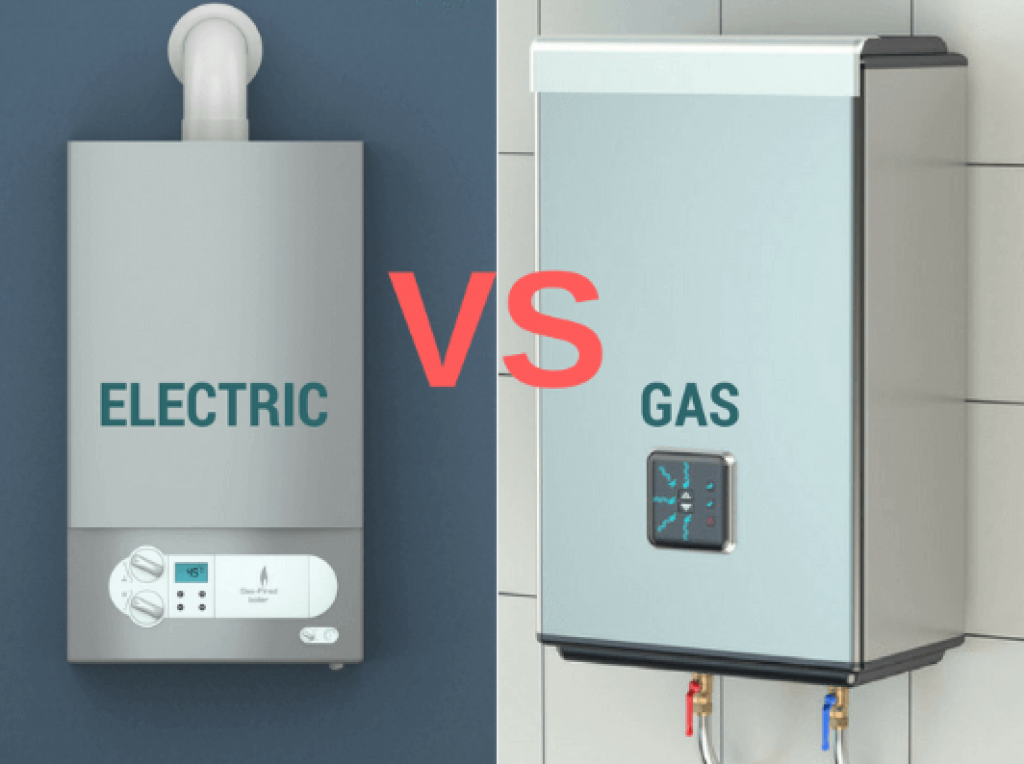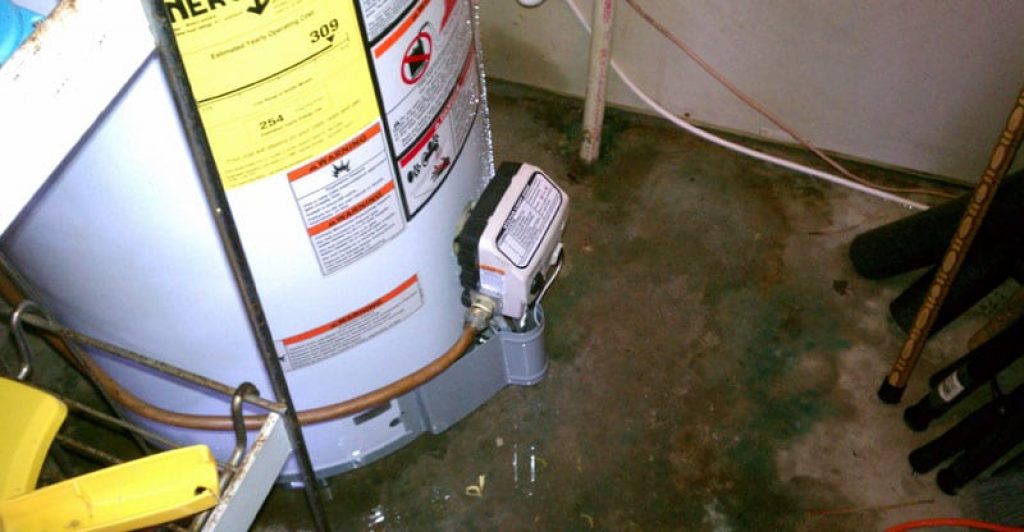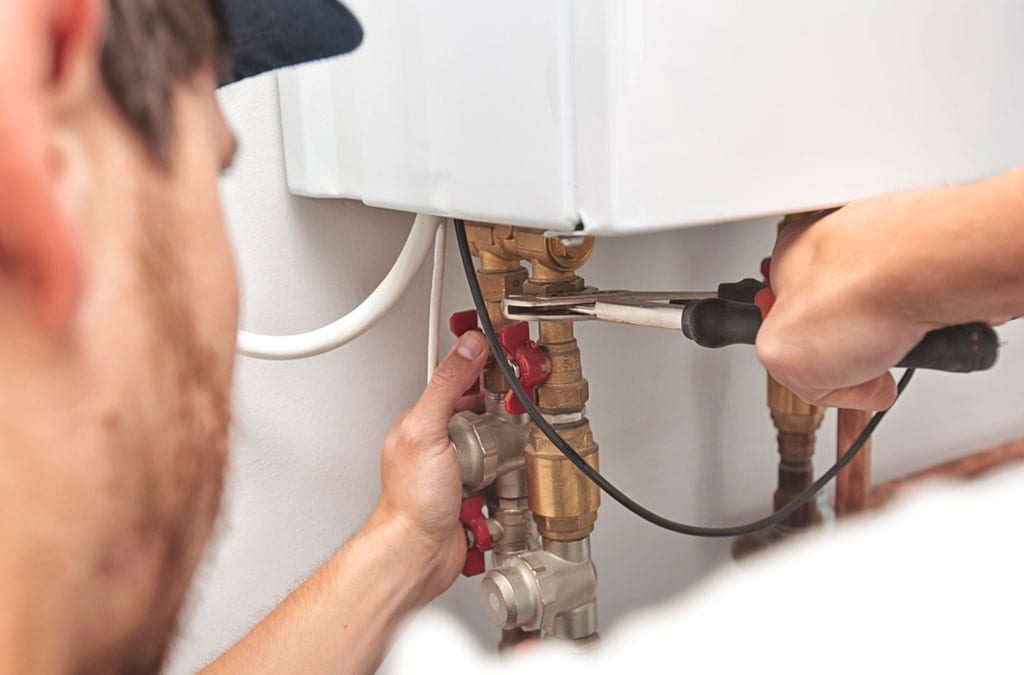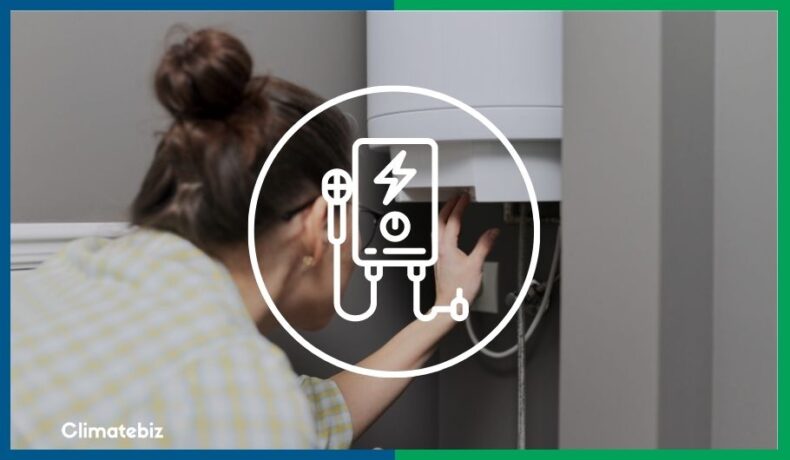If you’re in the market for a tankless water heater, you must be mindful of the system’s pros and cons.
While these water heating units can revolutionize how you use hot water in your home, they don’t come cheap.
As such, it’s best to assess the advantages and disadvantages before you make the leap from your conventional storage-tank water heater to a tankless one.
Table of Contents
10 Tankless Water Heater Pros
1. Gas & Electric

Source: Study Abroad
While many tankless water heaters are gas-fired, there are also electric models out there. Purchasing an electric TWH can help you to avoid gas-line installation complications.
2. Increased System Lifespan
According to the U.S. Department Of Energy, the majority of TWHs have a lifespan of more than 20 years, making their lifespan substantially better than traditional water heaters (10-15 years).
Moreover, demand water heaters have easily replaceable parts. As such, these water heaters have the potential to run for longer than their estimated lifespan.
3. Higher Efficiency Levels
Efficiency is key, no matter what you’re working with, be it rainwater harvesting, solar panels, or a greywater system.
Water heating is no different. Demand water heaters can increase the energy efficiency of homes that use 41 gallons or less of hot water per day by 24% to 34%.
If your household tends to use more water than that, fear not! These water heaters can increase the energy efficiency of homes that use around 86 gallons per day by 8% to 14%.
4. No Standy Loss
Conventional storage water heaters suffer from standby loss —energy is wasted when heat from the water within the storage tank transfers through the tank and out into the air surrounding it.
Fortunately, tankless water heaters don’t suffer from this issue because they don’t have a storage unit.
5. Hot Water Availability
It’s the middle of winter, you’ve just woken up, and you’re dying for a shower. You jump in and are halfway through only to run out of hot water because your family has used it all! Now you’re cold and miserable — not exactly a fun way to start the day.
Unfortunately, this is an all too familiar situation that traditional tank water heater (TTWH) owners will face — chances are, every one of you reading this article has found yourself in this scenario, or at the very least, one similar to it.
Now, this is where TWHs really shine. The process by which these water heaters work means that they can provide you with a near endless stream of hot water on-demand!
This is in stark contrast to TTWHs that need to heat up and maintain the water temperature stored inside them, all while suffering from standby loss.
6. Home Value
The past few years have shown us how unpredictable life can truly be — there are some things that you simply cannot plan for.
These days, being a homeowner can be incredibly stressful — do you invest in your property further and consolidate your living position, or do you look to expand elsewhere?
If you choose the former, you want to make sure that the additions to your property increase its value.
Fortunately, TWHs can do just that — nowadays, they are seen as a real benefit.
TWHs have several features that prospective homeowners love to see, from their efficiency to their long lifespan. As such, should you ever choose to sell your home, you can expect them to add value to the resale price.
7. Space-Saving
Are you pressed for space? You’re in luck — demand water heaters are smaller and more modular than their storage tank counterparts.
Point-of-use water heaters are particularly adept at fitting into smaller spaces like a closet or under a sink.
They can also free up space. Let’s say you have a single-story house with a water heater closet. You can re-pipe those lines up into the attic — you may have to add an additional gas outlet there anyway because a regular tank water heater takes half an inch and most tankless water heaters use a ¾ inch outlet.
In short, moving those lines up to the attic will free up a closet in your house.
8. Versatility
Nowadays, you can choose between whole-house and point-of-use tankless water heater systems.
Whole-house TWHs are larger and have high enough flow rates to provide multiple faucets in your home with hot water.
Point-of-use TWHs are smaller lower flow rate units that generally service one faucet at a time.
Here’s the best part — you can install TWH in parallel series! Therefore, should you need more than one TWH for your household, you can do so with ease!
9. Rebates
While federal tax credits no longer exist for tankless water heaters, some companies still provide rebates on the purchase and installation of various gas-fired models. These rebates range from $100 – $1000.
For more info, click here.
10. Less Hazardous

Source: Water Heater Hub
A conventional tank water heater can be extremely hazardous, especially when they’ve been neglected or are at the end of their life cycle.
Let’s put it this way — ever had a storage water tank burst on you? It’s not fun.
A burst water heater can cause a ton of damage, both flooding and otherwise, to your home.
In contrast, a tankless water heater that has been neglected or is at the end of its lifespan will simply stop functioning.
10 Tankless Water Heater Cons
1. Installation Cost
Conventional storage water heaters are relatively cheap to purchase and install. Unfortunately, the same cannot be said for tankless water heaters.
The cost of installing a TWH is between $1203 to $3469. This is in stark contrast to the cost of storage-tank water heater installation ($829 to $1,632).
2. Retrofit Installations
Tankless water heater cost is poor for retrofit applications where a TTWH is operating safely.
It’s also cheaper to replace one storage water heater with another — you’re not going to have to pay for additional gas lines, electric lines, and/or different mounting brack or wall plates, etc. As such, the cost is going to be a lot less.
You’ll find that some plumbers will literally just disconnect the flex connectors, pull the old water heater out, put the new one in, and hook it right back up — job done.
That’s not to say there aren’t more thorough plumbers out there that’ll change out the valves, lines, upgrade the drip leg, etc., while they’re at your home.
To summarize — in these situations, a TWH won’t pay for itself in its lifetime without significantly reduced installation costs or a significant increase in gas prices.
3. Maintenace

Source: The Original Plumber
Tankless water heaters tend to require slightly more rigorous maintenance to operate efficiently — they are more advanced systems and, as such, need a bit more TLC.
4. “Instant” Hot Water
Okay, this isn’t so much a con as debunking a TWH myth.
A tankless water heater does not give you instant hot water. It gives you hot water on demand.
On-demand doesn’t mean you’re guaranteed hot water immediately after turning the TWH on and opening a faucet. Occasionally, it can take just as long to get hot water from your tankless tank to your water faucet.
Here’s why
To heat water, a TWH slows down the movement of water moving through the heater exchanger. It does this so that it can heat the water to a specific temperature.
For example — if your inlet water temperature is 70 ℉ (21 ℃) and you’re trying to get 140 ℉ (60 ℃) degrees, that 70℉ (21 ℃) difference is what your TWH is trying to heat.
As such, it may have to slow it down as it gets through the heat exchanger to get it that hot!
The neat thing about it is that it’ll give you unlimited hot water once you get it.
5. Gas Lines
Tankless water heaters require a less conventional setup, so a gas installation contractor may be necessary to reroute gas lines and/or add venting to the household.
6. Reliance On Electricity
All tankless water heaters require electricity to operate — yes, even gas-fired models. Electric heaters require electricity to heat the water, but both need electricity to power their remote thermostats, electric control system, and ignition system.
Conversely, conventional tank water heaters are more adept at handling power outages. Many of them come with gas burners to keep your water nice and hot, even while the power is out.
What’s more, a storage water heaters tank is insulated well enough to keep water hot enough(for quite some time) until power returns.
In Short
Unless you are equipped with backup power or have a solar panel system with battery storage that can survive a power outage, you’ll run out of hot water as soon as the power goes out.
7. Homeowners Associations (HOA)
Homeowners Associations can be a potential obstacle for prospective tankless water heater owners.
If you’re thinking about switching to a tankless water heater and you’re part of an HOA, make sure your HOA will allow it. Some HOA’s have restrictions against wall penetrations. Unfortunately, gas-fired TWHs require these wall modifications for their gas burn.
8. Return On Investment (ROI)
If you use a lot of hot water, a tankless water heater will save you more money over time.
If you use less than 45 – 50 liters a day, the ROI over time will not be beneficial enough for you to stray from using a tank-top water heater.
9. Cold Water Sandwich Effect
This takes place in homes with tankless water heaters. Residual water in the pipes going to a faucet or shower can still be hot, creating an initial surge of hot water, followed by cold water, which quickly turns hot once again.
While this isn’t a major issue, it can be jarring for people unaccustomed to using a tankless water heater.
10. Multiple Faucets
Point-of-use tankless water heaters can struggle to supply enough hot water to multiple faucets.
If your demand exceeds the TWHs supply, you may be forced to purchase and install multiple units or spend a substantial amount of money on a whole-house unit.
Final Thoughts
It’s safe to say that a tankless water heater has its fair share of pros and cons.
A high upfront cost, water pressure issues, and a reliance on electricity mar what is otherwise a fantastic system.
But if you’re willing to work around those drawbacks, you’ll be more than happy with the near-endless, on-demand supply of hot water that they provide!

